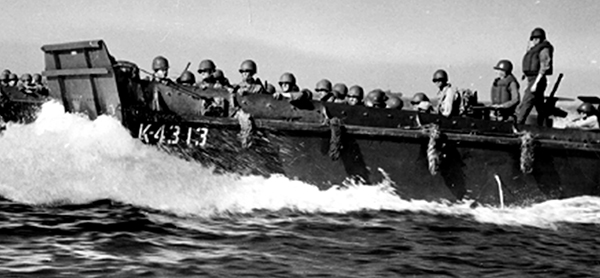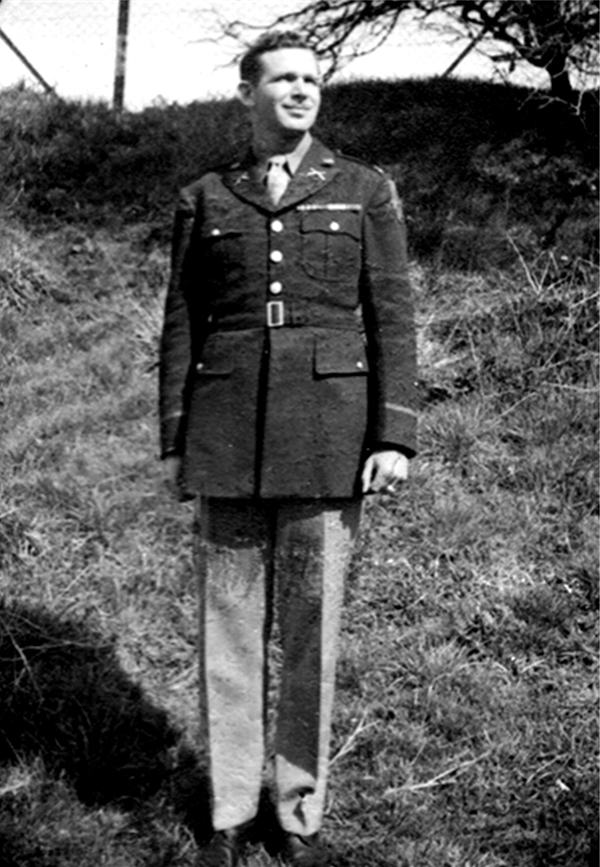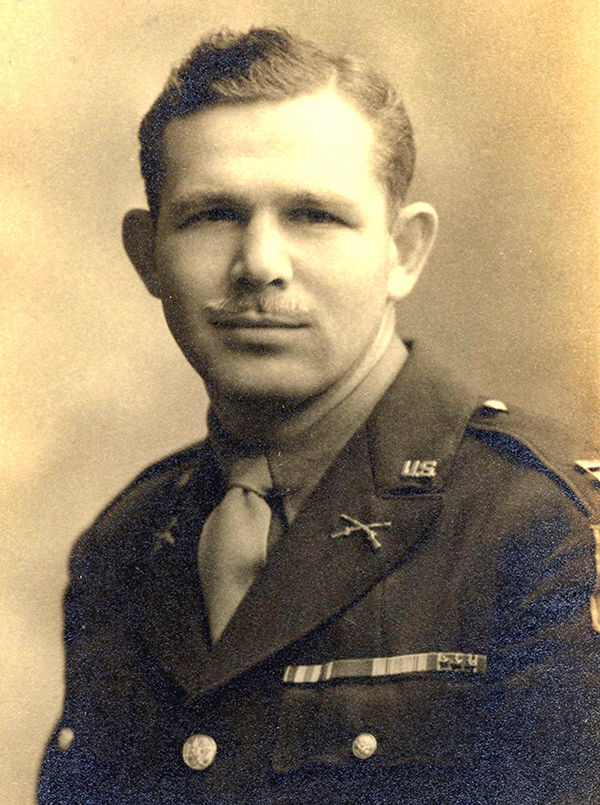
Meet Captain Archibald B. Cameron, U.S. Army World War 2 Hometown Hero,
One of Our Cranford 86
By Don Sweeney, research by Lt. Col. Steve Glazer (Ret.), Cranford Historical Society
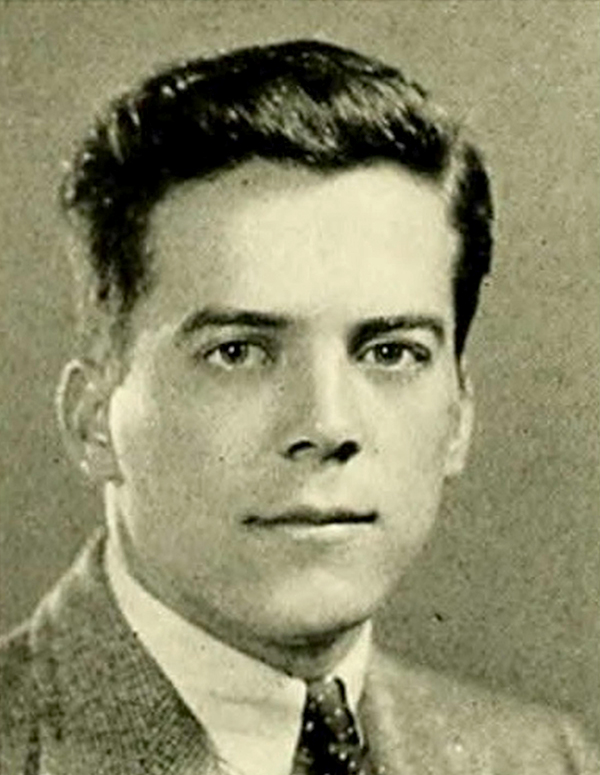 As my thoughts turn to the next Cranford hometown hero to spotlight, I go back to last month’s Cranford 86 honoree and his siblings who told the story of Nick Vassallo. I was saddened to receive a call this past weekend informing us that Dan Vassallo, 100-year-old World War 2 Army veteran and brother of Nick, had passed away after surgery. Meeting Dan, his Marine brother John and their extended families last month while researching Nick’s story had me thinking. The wonderful lives they all were charmed to live here in Cranford, surrounded by loving children, grandchildren and great-grandchildren, were experiences that all of our Cranford 86 and the thousands of American soldiers who paid the ultimate price for freedom did not get a chance to enjoy. Thoughts like these give me the drive to complete all 86 stories of these brave young Cranford men. After sorting through our Cranford Historical Society archives, what caught my eye this month were the incredible accounts of Captain Archibald B. Cameron, one of the most decorated members of our Cranford 86. A Cranford resident since birth, Arch, as known to his friends, lived at 33 Retford Ave. He graduated Lincoln School’s kindergarten in 1923 and progressed into Cranford High School at Cleveland School, now Cleveland Plaza, where he was an outstanding athlete in football and track. He graduated in the class of 1935 and was accepted into the R.O.T.C program at Virginia Polytechnic Institute of Blacksburg Va., now known as Virginia Tech. While there, he was named an All American football player. Upon graduation in 1939, he was commissioned a lieutenant in the U.S. Army and reported for duty to the 18th U.S. Infantry Regiment of the 1st Infantry Division, nicknamed “the Big Red One” because of the single red “1” on its shoulder patch. Arch shipped out to Scotland and then England to prepare for the invasion of North Africa under General George S. Patton, which was made on November 8th, 1942. From there, he saw much combat action, including at St. Cloud, Longstop Hill, Goublant, El Guettar and Mateur. For his acts during the battle of Longstop Hill in Tunisia on Christmas Eve 1942, he was awarded the Silver Star for gallantry in action and promoted to captain two days later. He also received the Purple Heart for shrapnel wounds from Longstop Hill. As the path to Berlin was set by General Dwight D. Eisenhower, Arch continued his war journey. Italy was targeted as the next battlefield for the Allied troops. He took part in the amphibious landings on Sicily with his regiment on July 10, 1943, and engaged in many more battles, notably Gela, Caltanissetta, Troina and Mistretta. Sailing from Sicily on October 18, 1943, Arch was ordered to return to England with his men as preparations were underway for the impending D-Day invasion in Normandy.
As my thoughts turn to the next Cranford hometown hero to spotlight, I go back to last month’s Cranford 86 honoree and his siblings who told the story of Nick Vassallo. I was saddened to receive a call this past weekend informing us that Dan Vassallo, 100-year-old World War 2 Army veteran and brother of Nick, had passed away after surgery. Meeting Dan, his Marine brother John and their extended families last month while researching Nick’s story had me thinking. The wonderful lives they all were charmed to live here in Cranford, surrounded by loving children, grandchildren and great-grandchildren, were experiences that all of our Cranford 86 and the thousands of American soldiers who paid the ultimate price for freedom did not get a chance to enjoy. Thoughts like these give me the drive to complete all 86 stories of these brave young Cranford men. After sorting through our Cranford Historical Society archives, what caught my eye this month were the incredible accounts of Captain Archibald B. Cameron, one of the most decorated members of our Cranford 86. A Cranford resident since birth, Arch, as known to his friends, lived at 33 Retford Ave. He graduated Lincoln School’s kindergarten in 1923 and progressed into Cranford High School at Cleveland School, now Cleveland Plaza, where he was an outstanding athlete in football and track. He graduated in the class of 1935 and was accepted into the R.O.T.C program at Virginia Polytechnic Institute of Blacksburg Va., now known as Virginia Tech. While there, he was named an All American football player. Upon graduation in 1939, he was commissioned a lieutenant in the U.S. Army and reported for duty to the 18th U.S. Infantry Regiment of the 1st Infantry Division, nicknamed “the Big Red One” because of the single red “1” on its shoulder patch. Arch shipped out to Scotland and then England to prepare for the invasion of North Africa under General George S. Patton, which was made on November 8th, 1942. From there, he saw much combat action, including at St. Cloud, Longstop Hill, Goublant, El Guettar and Mateur. For his acts during the battle of Longstop Hill in Tunisia on Christmas Eve 1942, he was awarded the Silver Star for gallantry in action and promoted to captain two days later. He also received the Purple Heart for shrapnel wounds from Longstop Hill. As the path to Berlin was set by General Dwight D. Eisenhower, Arch continued his war journey. Italy was targeted as the next battlefield for the Allied troops. He took part in the amphibious landings on Sicily with his regiment on July 10, 1943, and engaged in many more battles, notably Gela, Caltanissetta, Troina and Mistretta. Sailing from Sicily on October 18, 1943, Arch was ordered to return to England with his men as preparations were underway for the impending D-Day invasion in Normandy. 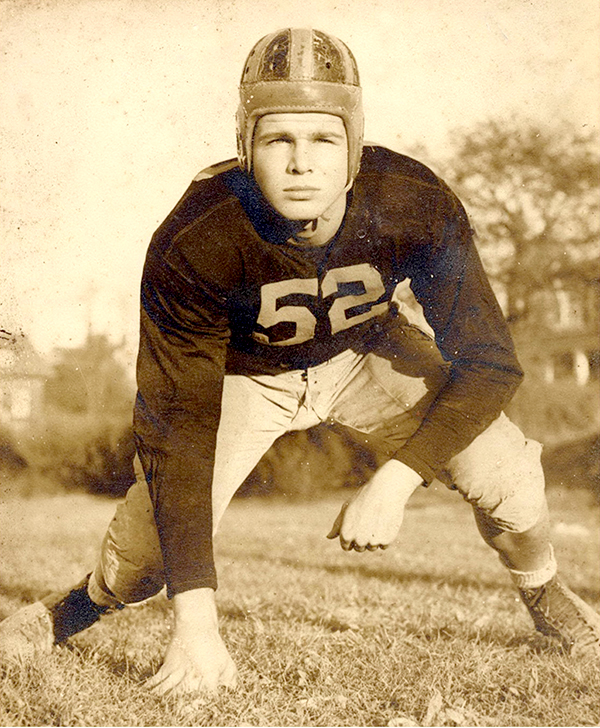 On June 6th 1944, in the largest amphibious attack in the history of the world, Arch, along with 156,000 soldiers, 5120 aircraft and 6900 ships, stormed Fortress Europe on the shores of Normandy. His unit entered on the beaches of Colleville-sur-Mer, code-named “Omaha.” With the grace of God he survived the battle. Sadly, over 12,000 Allied troops did not. Of the five beaches attacked, Omaha was the bloodiest, accounting for more than half the casualties. Many brave men remain in vast military graveyards just a few yards from the cliffs overlooking the beaches. With the success of the Normandy landings and the apparent turning point of the war at hand, the road to Berlin continued as the Allies chased the German army across France. Many tough fights still lie ahead. Our Cranford hometown hero would meet his end less than two months later, on July 26, 1944, as the Allied forces attempted a breakthrough to Paris in a 30-day battle outside the French town of St. Lo. During a fierce hedgerow battle, with many hand-to-hand encounters, Arch’s battalion was surrounded by enemy forces. While attending to the wounds of his commanding officer, Lt. Col. Joseph W. Sisson, Arch himself was hit with machine gun fire and died. A letter was uncovered written by his closest friend, Captain E.W. MacGregor of Brooklyn, NY, who fought beside Arch through much of the war. It best tells the story. “The happy warrior has gone to Valhalla of all fighting men and I have lost the finest friend and buddy that any man could ask. Yes I regret to tell you that old Archibald B. Cameron has made his last charge and bade farewell to the stormy world in the same way that he lived. “While he lived Arch was a most unusual man. He was beloved by all and never spoke an unkind word of anyone. He was a great fighter and didn’t have a nerve in his body, but he wasn’t a soldier in the typical sense of the word for he was always looking at the humorous side of life, playing pranks, raising hell mildly at times and being full of sentiment. Arch was honest and honorable as the day is long and led a clean life. “It is tragic that we have lost him. He was killed instantly by a Jerry machine gun while trying to assist our Battalion Commander who had been wounded a few seconds before. Shells and casings were crashing and pinging all about me as I knelt in prayer beside his long frame, but I wasn’t aware of them even if I heard them. I could hear his ringing voice in the distance saying ‘Carry on, Mac’ and suddenly realized, the battalion C.O. being wounded meant I was in charge. I said, ‘so long Arch’, and moved quickly off to continue the attack. “Arch is gone, and I am quite heartbroken about it, but his influence will stay with me forever and whatever qualities I possess in laying claim to being a man will be due in large part to his underlying friendship and influence. When Arch passed, something went out of me and I’ll be oh so happy when this whole rotten mess is over and we can return to a peaceful, quiet, normal life.”
On June 6th 1944, in the largest amphibious attack in the history of the world, Arch, along with 156,000 soldiers, 5120 aircraft and 6900 ships, stormed Fortress Europe on the shores of Normandy. His unit entered on the beaches of Colleville-sur-Mer, code-named “Omaha.” With the grace of God he survived the battle. Sadly, over 12,000 Allied troops did not. Of the five beaches attacked, Omaha was the bloodiest, accounting for more than half the casualties. Many brave men remain in vast military graveyards just a few yards from the cliffs overlooking the beaches. With the success of the Normandy landings and the apparent turning point of the war at hand, the road to Berlin continued as the Allies chased the German army across France. Many tough fights still lie ahead. Our Cranford hometown hero would meet his end less than two months later, on July 26, 1944, as the Allied forces attempted a breakthrough to Paris in a 30-day battle outside the French town of St. Lo. During a fierce hedgerow battle, with many hand-to-hand encounters, Arch’s battalion was surrounded by enemy forces. While attending to the wounds of his commanding officer, Lt. Col. Joseph W. Sisson, Arch himself was hit with machine gun fire and died. A letter was uncovered written by his closest friend, Captain E.W. MacGregor of Brooklyn, NY, who fought beside Arch through much of the war. It best tells the story. “The happy warrior has gone to Valhalla of all fighting men and I have lost the finest friend and buddy that any man could ask. Yes I regret to tell you that old Archibald B. Cameron has made his last charge and bade farewell to the stormy world in the same way that he lived. “While he lived Arch was a most unusual man. He was beloved by all and never spoke an unkind word of anyone. He was a great fighter and didn’t have a nerve in his body, but he wasn’t a soldier in the typical sense of the word for he was always looking at the humorous side of life, playing pranks, raising hell mildly at times and being full of sentiment. Arch was honest and honorable as the day is long and led a clean life. “It is tragic that we have lost him. He was killed instantly by a Jerry machine gun while trying to assist our Battalion Commander who had been wounded a few seconds before. Shells and casings were crashing and pinging all about me as I knelt in prayer beside his long frame, but I wasn’t aware of them even if I heard them. I could hear his ringing voice in the distance saying ‘Carry on, Mac’ and suddenly realized, the battalion C.O. being wounded meant I was in charge. I said, ‘so long Arch’, and moved quickly off to continue the attack. “Arch is gone, and I am quite heartbroken about it, but his influence will stay with me forever and whatever qualities I possess in laying claim to being a man will be due in large part to his underlying friendship and influence. When Arch passed, something went out of me and I’ll be oh so happy when this whole rotten mess is over and we can return to a peaceful, quiet, normal life.”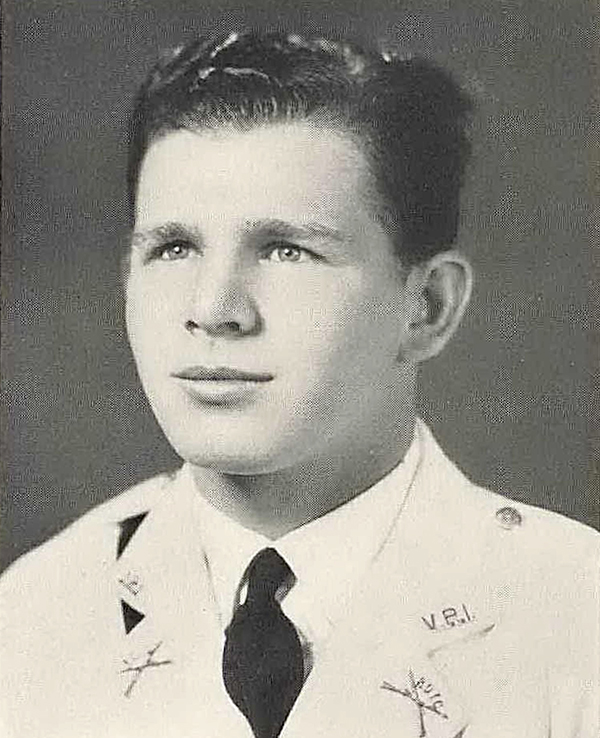 Capt. McGregor finished by saying “that of all the fights they had been in together, he had seen tougher. But this fight was from all directions, including the rear. We took more surrendering prisoners than they could handle and we had no sleep for days on end.” In a letter to his parents just days before his death, Arch wrote, “We are taking many prisoners that tell us they believe that they have already lost the war, but they will fight to the very end.” The battle of St. Lo ended victoriously for the Allies, sadly, two days after Arch’s death. For the wounds that ended his young life he received his second Purple Heart. Our research of the events surrounding Arch’s death revealed that his commanding officer, Colonel Sisson, for whom he gave his life, survived his wounds. Col. Sisson went on to serve 31 years in the Army, later fighting in Korea and Vietnam. Thus, Arch’s heroism in 1944 touched even future wars. We were further surprised to learn that the officer saved by Arch on a distant French battlefield was the nephew of another longtime Cranford family. Colonel Sisson’s uncle was Harry R. Sisson of 313 N. Union Ave. The road to Berlin would continue without Arch, coming to a victorious end 10 months after his death, on May 7, 1945, with the unconditional German surrender signed in Reims, France. Arch was buried at Arlington National Cemetery with full military honors. His father, a Spanish American War veteran, was laid beside him just three years later. Captain Archibald B. Cameron was a great American and one of our Cranford 86. He was just 26 years old when he made the supreme sacrifice for his town and country. If you personally know, or know someone else who knows the story of one of our hometown heroes, we ask you to come forward and help us fill the many blanks we have in our research. To see the full list and the seven stories that we have told already, go to our Facebook page at Cranford86 or call Don Sweeney (908) 447-6511.
Capt. McGregor finished by saying “that of all the fights they had been in together, he had seen tougher. But this fight was from all directions, including the rear. We took more surrendering prisoners than they could handle and we had no sleep for days on end.” In a letter to his parents just days before his death, Arch wrote, “We are taking many prisoners that tell us they believe that they have already lost the war, but they will fight to the very end.” The battle of St. Lo ended victoriously for the Allies, sadly, two days after Arch’s death. For the wounds that ended his young life he received his second Purple Heart. Our research of the events surrounding Arch’s death revealed that his commanding officer, Colonel Sisson, for whom he gave his life, survived his wounds. Col. Sisson went on to serve 31 years in the Army, later fighting in Korea and Vietnam. Thus, Arch’s heroism in 1944 touched even future wars. We were further surprised to learn that the officer saved by Arch on a distant French battlefield was the nephew of another longtime Cranford family. Colonel Sisson’s uncle was Harry R. Sisson of 313 N. Union Ave. The road to Berlin would continue without Arch, coming to a victorious end 10 months after his death, on May 7, 1945, with the unconditional German surrender signed in Reims, France. Arch was buried at Arlington National Cemetery with full military honors. His father, a Spanish American War veteran, was laid beside him just three years later. Captain Archibald B. Cameron was a great American and one of our Cranford 86. He was just 26 years old when he made the supreme sacrifice for his town and country. If you personally know, or know someone else who knows the story of one of our hometown heroes, we ask you to come forward and help us fill the many blanks we have in our research. To see the full list and the seven stories that we have told already, go to our Facebook page at Cranford86 or call Don Sweeney (908) 447-6511.